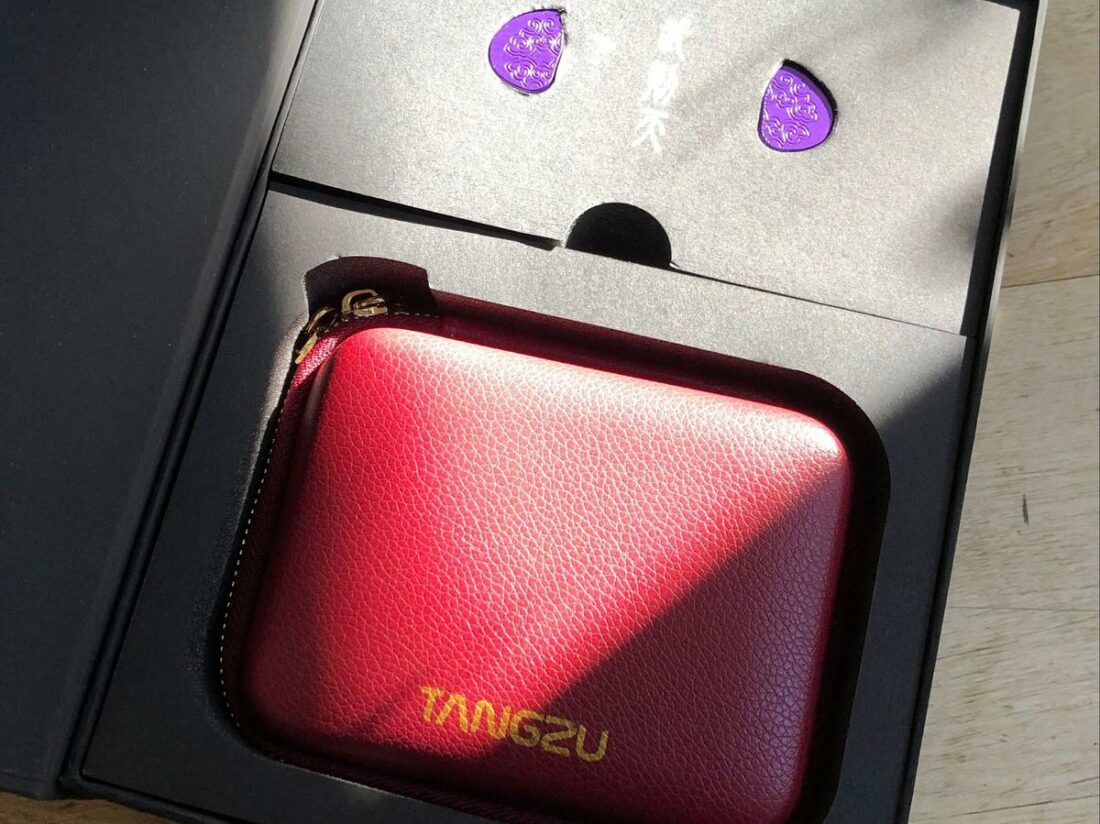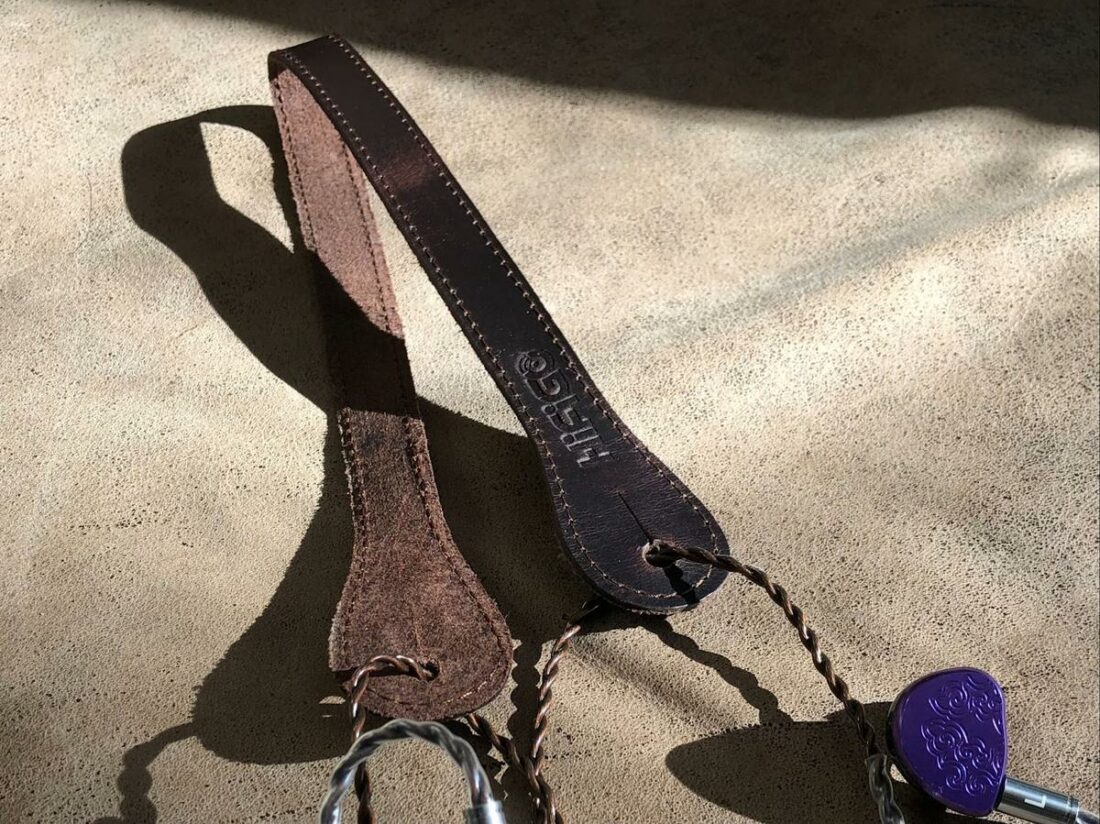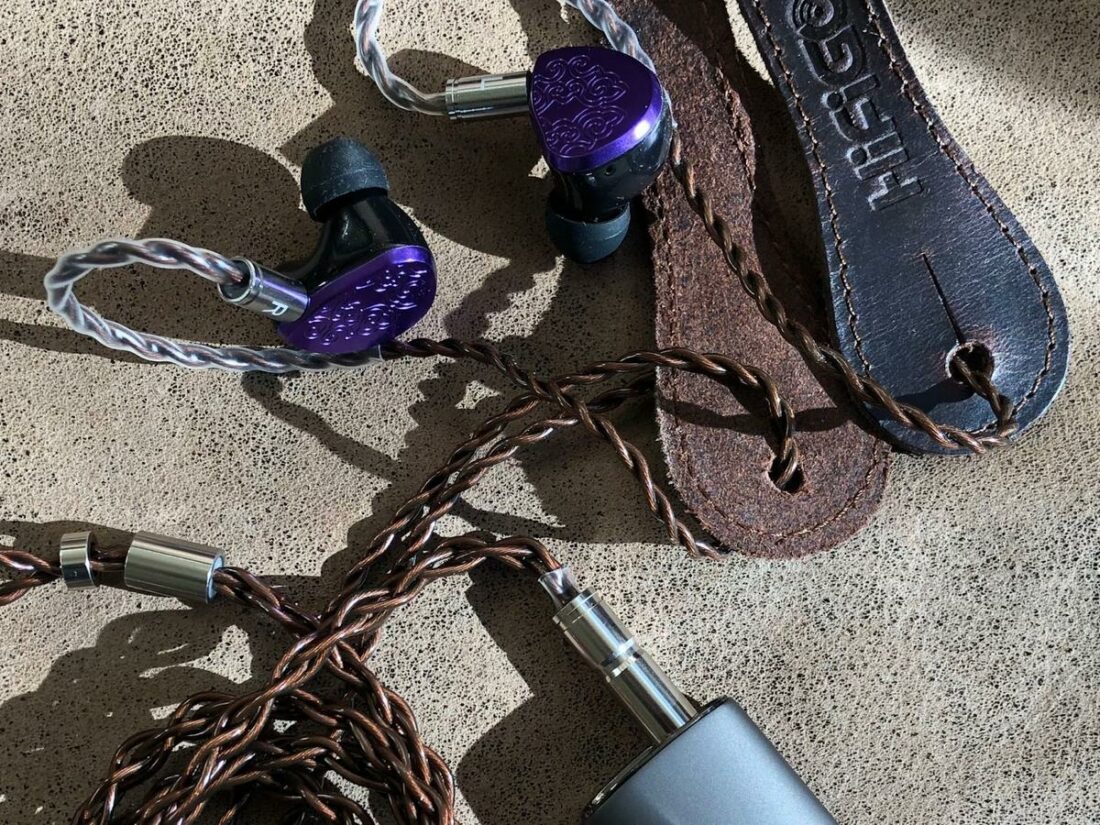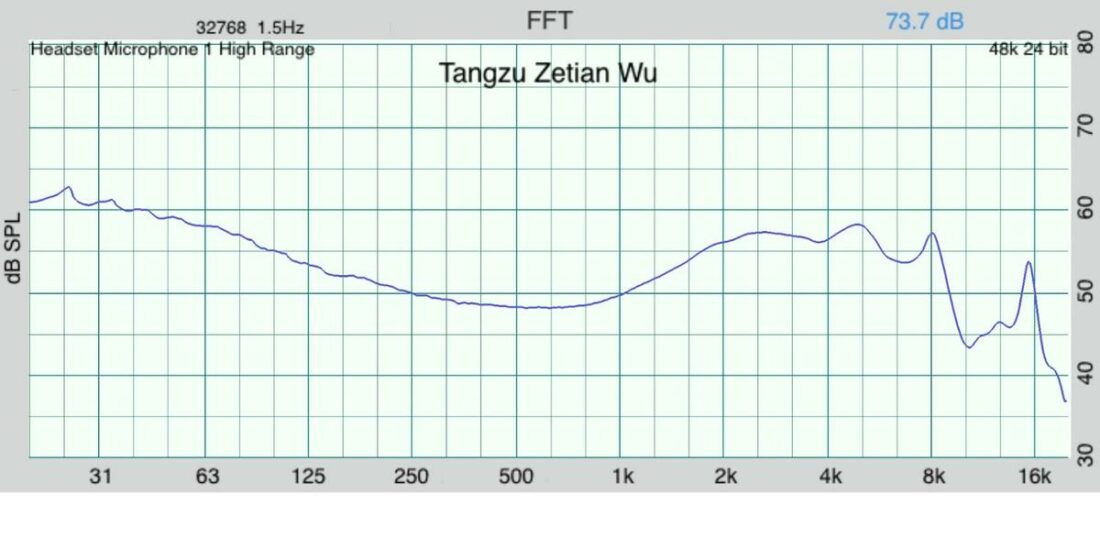Ok, Ok. We get it. Planar magnetic IEMs are hot right now. Another pair is released just about weekly, and many seem to share the magic driver size of 14.5mm. However, despite the parallels, all are not the same, and there are some very different sound signatures to be found. To be frank, I was not impressed with many of the early planar magnetic IEM offerings. Some were too bass-light for my tastes, and few sounded truly natural. All too often, there seemed to be an excessive upper-midrange emphasis, leading to a honky and nasal tonality. Of course, the benefit of so many new models is that companies learn and adapt from each other’s mistakes. It seemed inevitable that sound quality would improve while prices fell. For around USD $150, several options on the market boast their own strengths and particular sonic flavor. We may have finally entered the golden age of the affordable planar-magnetic IEM. Enter the Tangzu Zetian Wu. Wu Zhao commonly known as Wu Zetian, was the ruler of China from 665 to 705, first ruling through others and from 690 as the empress regnant. She was the only legitimate female sovereign in the history of China. Are the historically monikered Tangzu Zetian Wu poised to rule the newly established affordable planar magnetic IEMs category, or will their name simply be lost to history? Grab a companion, hop in your Tardis, and let’s travel through time to find out. The entire Zetian Wu package is classy and attractive.
Company Overview
Tangzu Audio, formerly TForce, is a Chinese IEM manufacturer with an eye on history. Wu Zetian ruled during the Tang dynasty, serving as the inspiration for the Tangzu name. The Zetian Wu are the third pair of IEMs the company has released, all named for Tang dynasty rulers. First was the Yuan Li, followed by the Shimin Li, and now the Zetian Wu. The Shangguan Wan’er IEMs are expected in 2023.
Technical Specifications
Form: IEM Drivers: 14.5mm planar-magnetic Impedance (Ohm): 16 Ohms Sensitivity (dB): 100dB (1kHz) Frequency Response (Hz): 20 Hz – 20 kHz Removable Cable: Y Source Jack: 4.4mm, TRRS, balanced Cup/Shell Jack: 2-pin, 0.78mm Weight (g): 4g per earpiece
Packaging
The Zetian Wu come in a large, colorful, and delightfully embellished box. The outer wrap is attractive and features an artist’s rendition of the empress. The inner black box has a magnetic closure, a calligraphed vellum insert over the case, and a generous selection of ear tips. The large red faux-leather zippered case is very regal. You’d never fit it into a pocket, but the roomy black velvet-lined interior will easily hold a couple of pairs of IEMs, a dongle or two, and all related cables.
In the box
Zetian Wu IEMs Zippered case 3 pairs of silicone ear tips labeled “Balanced” (S/M/L) 3 pairs of silicone ear tips labeled “Bass Enhanced” (S/M/L) 1 pair of silicone ear tips labeled “Foams” Cable – balanced 4.4mm, 0.78mm 2-pin (1.2m)
The “Foams” ear tips have the widest bore and appear to increase treble reproduction, while the “Bass Enhanced” ear tips have a narrow bore that increases bass response. The “Balanced” ear tips seem to split the difference, with a mid-sized bore and more middle-of-the-road tuning.
Cable
The 1.2m 5N oxygen-free copper cable is a bit of a treat and is nicely braided and attractive. It has silver metal connectors, y-split, and chin cinch. The dark brown copper color is understated and classy, and the cable is both flexible and non-microphonic.
Design
The Zetian Wu’s bodies are constructed from 3D-printed black resin, but the star of the show is the aluminum faceplate color. The flat plates are engraved with a traditional Chinese pattern and are an arresting anodized purple color that manages to be both flashy and classy. Anything this distinctive is likely to have fans and detractors, but to my eyes, the color and design speak to the royal lineage of this pair of IEMs. The 2-pin sockets are flush to the body, and each shell is labeled ‘L’ or ‘R’ for easy identification and corresponds to the same markings on the cable ends.
Comfort
Unlike some of the current planar IEM competition’s large or disturbingly long body shapes, the Zetian Wu’s smooth shells easily fit into my average-sized ears. They sit flush, are super lightweight (only 4g per earpiece), and as a result, remain comfortable over long listening sessions. There is a single small vent hole, but this doesn’t seem to hurt passive isolation and, combined with the good fit, makes the Wu a good choice for commuting.
Neck strap
HiFiGo has started including their house-brand leather earphone holder with the pairs of IEMs they’ve sent to me lately, and here in the Comfort section is as good a place as any to discuss it. It’s an idea that I haven’t encountered before, using a 45mm long leather strap with a hole at each end to create a band that, when worn behind the neck, can hold IEMs when removed from the ears. My initial skepticism was quickly lost when putting the neck strap into use. Once I figured out the proper configuration – with the HiFiGo logo on the left, insert cables from the bottom through the strap before plugging into the IEMs – the convenience of simply pulling one or two IEMs from my ears and letting them dangle from the strap won me over. It’s clever and well-made, and I’m a big fan of the dark brown leather, which is a great match for the Zetian Wu cable.
Internals
As a consumer, it may seem somewhat suspicious that many of the current planar magnetic IEMs all sport a 14.5mm driver. Conspiracy theorists will likely ask how many are using the same OEM driver and just putting it in their own shells. Honestly, I have no idea, but I look forward to the inevitable teardowns that will show up on forums. Even if that is the case, the end results speak for themselves; certainly, there are better and worse performers. So many things go into the sound beyond the driver – chamber, material, shape, vents, nozzle, tips – that make each pair of IEMs unique. As mentioned above, I’ve not been a fan of many of the earlier planar magnetic IEM attempts, even though I’m an admirer of the driver technology in full-sized headphones. A good planar driver should be able to deliver high resolution, fast transients, and low distortion. Audeze has had some success with its expensive and unusual planar IEM designs. Still, based on the regularity of new ChiFi releases, the industry has been impatiently waiting for high-performing affordable options to become a reality.
Tangzu Zetian Wu Sound
This time around, I paired the Zetian Wu mainly with the recently reviewed MUSE M3 portable DAC/amp, as it has a 4.4mm balanced output and therefore matches the cable connector. I also used my trusty portable rig consisting of a Hidizs AP80 Pro-X and Chord Mojo 2, with a 4.4mm to 3.5mm adapter. Music? All over the map for styles and formats. As usual. While the Zetian Wu are relatively efficient for IEMs (16 Ohms impedance and 100 dB sensitivity), they seem to respond well to amplification. Even at higher than normal listening volume levels, the Zetian Wu remain in control. The Zetian Wu are defined by a strong and prevalent sub-bass response, with a far lighter mid-bass and lower midrange. Bassheads may be underwhelmed as the more subdued mid-bass means these IEMs tend to rumble more than punch. Not quite as tight as a response as I could wish for, but respectable in this price range. The upper midrange picks up a bit, with a discernable bump near 2.5kHz, and brings some energy and engagement to vocals but without crossing the line into shouty territory. The treble is equally well done, with good extension providing a balance to the hefty lower frequencies, but controlled. Energetic without sibilance or sharp edges. I tend towards listening to rock, pop, and folk music, and the Zetian Wu handle anything I listen to easily with a fun, full sound. Although these IEMs seem best suited for modern pop or EDM music, they do well with various genres. Overall, the Zetian Wu have a thicker sound that imparts some warmth and weight to the music, but somewhat at the expense of detail retrieval and resolution. This isn’t to say they are muddy or blurred sounding, as they are not, but their sonic flavor is more on the easy, rather than critical, side of listening.
Bass
The lower bass region is emphasized, while the mid-bass to lower midrange is flatter in nature. This has the benefit of keeping the midrange reasonably free of bleed and creates a full, lush response in songs that favor this area. While things can get a little congested sounding when a lot of low-frequency information is coming quickly, the bass remains reasonably articulate. Its tuning focuses on rumble over punch and will appeal more to some listeners than others.
Midrange
The midrange stays pretty flat until the delicate lift in the upper frequencies. Not quite a typical scooped-out mids v-shaped tuning, but the emphasis of the Zetian Wu is more on the extremes of the frequency range. In tracks with a lot of sub-bass, the mids tend to get drowned out a bit and take a back seat to the low-frequency energy. However, when there is more room to breathe, the midrange does a good job of making voices and instruments sound natural. The low end can impart just a little warmth, giving male vocals a touch of weight and presence. Thankfully, the Zetian Wu avoid shoutiness and the unpleasant nasal nature that I’ve encountered in earlier planar magnetic IEM designs.
Treble
The treble is handled with a steady hand, and roll-off is relatively high, imparting an overall sweet and crisp flavor to the sound. It’s good to have more high-end energy here, as the treble can balance out the significant low end for the most part. Things sound clear, and the Zetian Wu manage to avoid a sense of veiling or a too-dark tonality. The overall listening experience is reasonably natural if just a touch overburdened by the lower frequencies in sub-bass heavy music. The treble presence is enough to keep things lively, but the Zetian Wu are more comfortable with a laid-back groove over analytical or technical listening.
Where to Buy
Conclusion
Finally, solid competition is materialising between affordable planar magnetic IEMs. No longer just a novelty, some have evolved into viable competitors at their respective price points. The Tangzu Zetian Wu are not just good planar magnetic IEMs, they offer a compelling value proposition against any similarly priced pairs of IEMs – regardless of driver type. Studio monitors, they are not. Boosted sub-bass, flattened midrange, and a touch of treble shine make for a distinct sound signature that will likely appeal most to modern pop listeners. However, the Zetian Wu’s laid-back tonality works well with various music genres, and purchasers will enjoy a fun listen regardless of taste. The bundled accessories are very good. The cable, case, and ear tips are all top-notch. The bodies are light, comfortable, and fit well in the ear. The purple color is terrific. I’m going to don the Zetian Wu and go listen to Prince’s Partyman. “All hail, the new king [empress] in town.”












